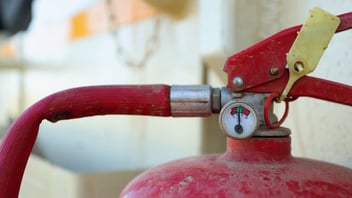In the high-risk environment of construction sites, Fire Safety and training are paramount to ensuring the well-being of all workers and the protection of valuable assets.
Understanding Fire Hazards on Construction Sites
Construction sites are inherently high-risk environments where fire hazards are a serious concern. Flammable materials, electrical equipment, and welding activities create a perfect storm for potential fires. Understanding these hazards is the first step in mitigating risks.
Identifying common fire hazards specific to construction sites, such as improperly stored flammable liquids, faulty electrical installations, and hot work operations, is crucial. Awareness and proactive management of these hazards can significantly reduce the likelihood of fire incidents.
Essential Fire Safety Measures for Construction Workers
Implementing essential Fire Safety measures is critical to protecting the workforce and assets on construction sites. All employees should be trained in basic fire prevention techniques, such as proper storage of flammable materials, maintaining clear exit routes, and the correct use of fire extinguishers.
Additionally, ensuring that all electrical installations comply with safety standards and regular maintenance checks are conducted can prevent electrical fires. Workers should also be equipped with personal protective equipment (PPE) and be aware of the site's fire safety protocols.
Comprehensive Fire Safety Training Programs
A robust Fire Safety training program is a cornerstone of effective fire prevention on construction sites. Training should cover the identification of fire hazards, proper use of firefighting equipment, and emergency evacuation procedures. This ensures that all workers are well-prepared to respond swiftly and effectively in the event of a fire.
Interactive and practical training sessions, such as fire drills and simulated emergency scenarios, can enhance the learning experience. Ongoing training and refresher courses are also essential to keep fire safety knowledge up-to-date.
Emergency Response Plans and Drills
Having a well-structured emergency response plan in place is vital for managing fire incidents. This plan should include clear evacuation routes, designated assembly points, and procedures for accounting for all personnel during an emergency.
Regular fire drills help to reinforce the emergency response plan and ensure that all workers know their roles and responsibilities. Drills also provide an opportunity to identify any weaknesses in the plan and make necessary improvements.
The Role of Management in Fire Safety
Management plays a pivotal role in fostering a culture of fire safety on construction sites. Leadership should prioritize fire safety by allocating resources for training, equipment, and regular safety audits. Management's commitment to safety sets the tone for the entire workforce.
Engaging workers in safety discussions and encouraging them to report potential hazards can create a collaborative environment where everyone feels responsible for fire safety. Continuous improvement and a proactive approach are key to maintaining a safe construction site.



.webp?width=352&name=Blog%20Graphic%20(10).webp)

-2.png?width=352&name=Untitled%20design%20(8)-2.png)
Leave a Comment